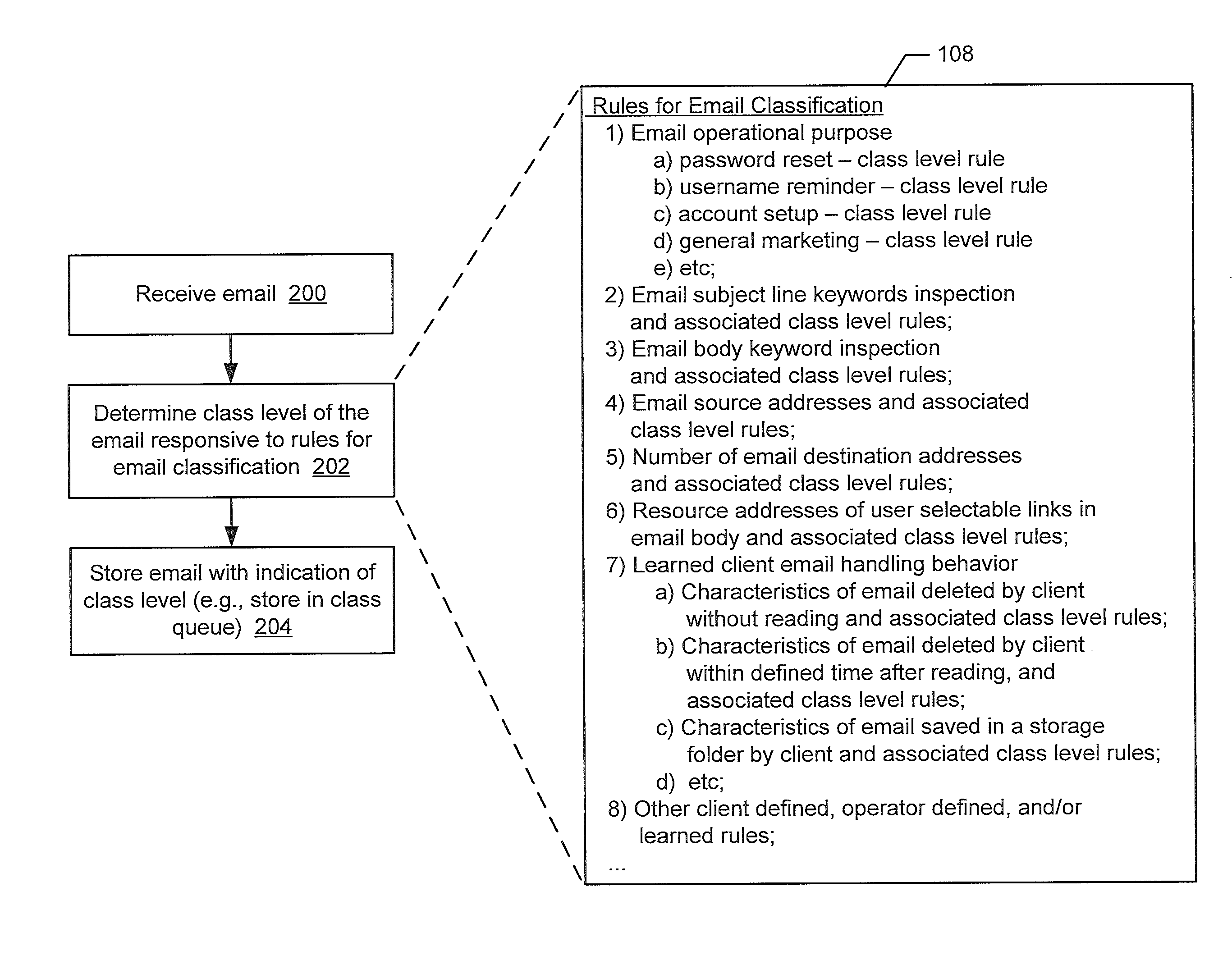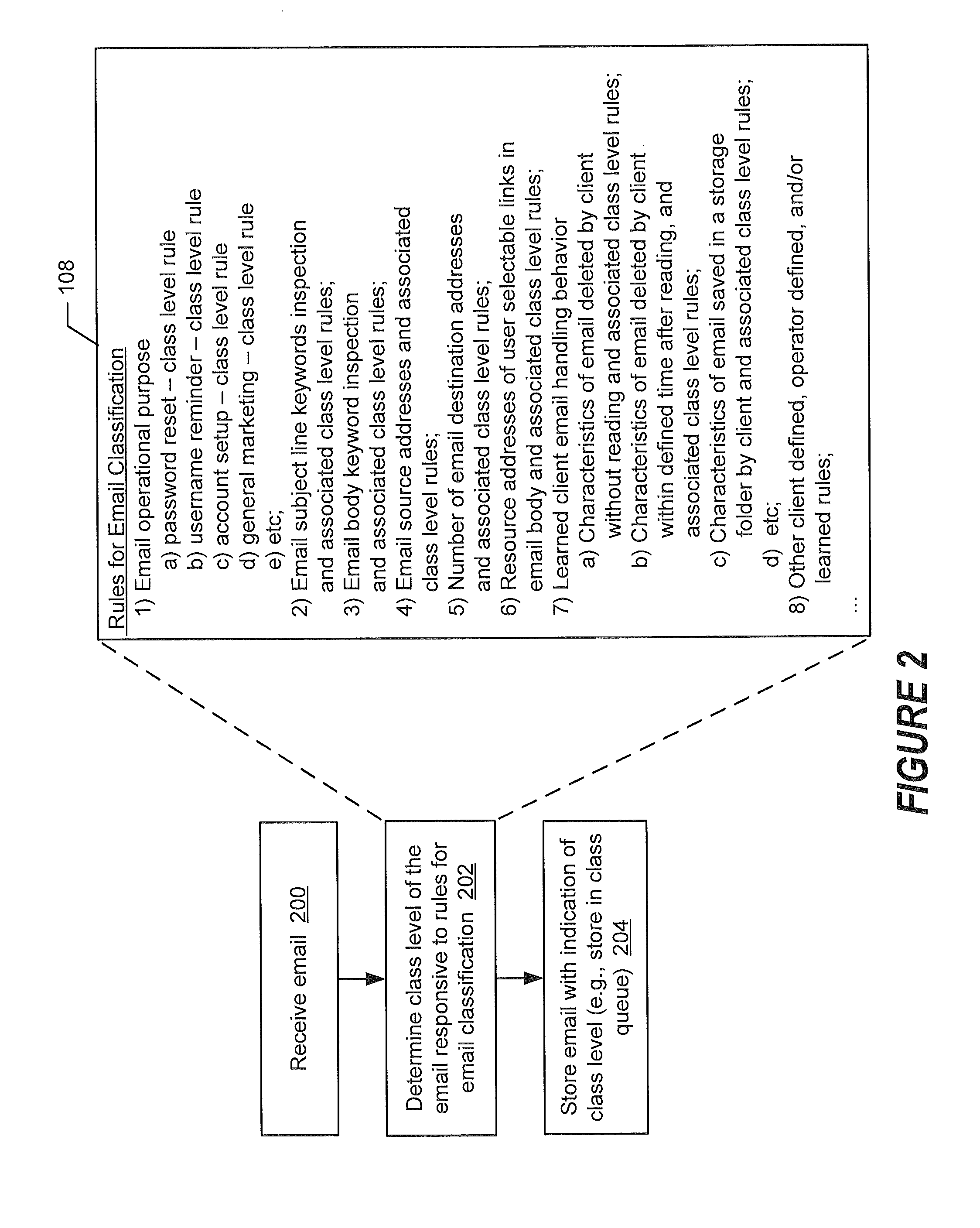Controlling client access to email responsive to email class levels
a client access and email technology, applied in the field of controlling client access to email responsive to email class levels, can solve the problems of identity theft, financial theft of those users, and extensive loss of personal/financial information
- Summary
- Abstract
- Description
- Claims
- Application Information
AI Technical Summary
Benefits of technology
Problems solved by technology
Method used
Image
Examples
Embodiment Construction
[0014]Embodiments of the present disclosure will be described more fully hereinafter with reference to the accompanying drawings. Other embodiments may take many different forms and should not be construed as limited to the embodiments set forth herein. Like numbers refer to like elements throughout.
[0015]As explained above, some email service providers enable users to activate multi-factor authentication to increase the level of security processes that are involved in controlling access to their email. However, multi-factor authentication may undesirably burden the user's access to email and unnecessarily restrict the user's access to email. One or more embodiments disclosed herein may arise based on the present realization that such multi-factor authentication approaches control the access to an email account without regard to any characteristics of the particular email that is being handled by that email account. At least some email, and for some users—most email, would not be co...
PUM
 Login to View More
Login to View More Abstract
Description
Claims
Application Information
 Login to View More
Login to View More - R&D
- Intellectual Property
- Life Sciences
- Materials
- Tech Scout
- Unparalleled Data Quality
- Higher Quality Content
- 60% Fewer Hallucinations
Browse by: Latest US Patents, China's latest patents, Technical Efficacy Thesaurus, Application Domain, Technology Topic, Popular Technical Reports.
© 2025 PatSnap. All rights reserved.Legal|Privacy policy|Modern Slavery Act Transparency Statement|Sitemap|About US| Contact US: help@patsnap.com



